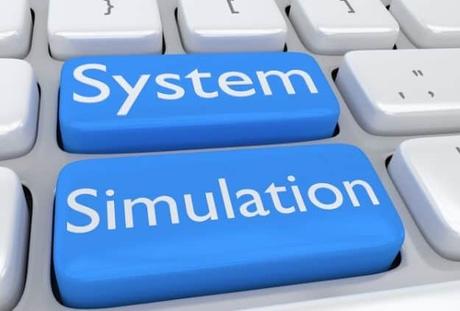Risk analysis is part and parcel of every organization. Different stakeholders and managers have to identify and analyze any potential risks that could negatively impact key business projects or initiatives. Still, Monte Carlo simulation can help you see all feasible outcomes of your choices and evaluate their risk impact, making decision making seamless.
In this post, I'll walk you through what is Monte Carlo Simulation, how it works, how you can use Monte Carlo Simulation to assess risks, and many more.

Monte Carlo Simulation Overview
Monte Carlo simulation was named after one of the popular gambling destinations in Monaco, France. Games like slot machines, roulette, and dice rely heavily on random outcomes and choices, which is the same case with Monte Carlo simulation.
Monte Carlo simulation was first invented by a mathematician, Stanislaw Ulam, who was also the man behind the Manhattan project. After the Second World War, Ulam sustained a brain injury, which forced him to play a ton of solitaire games.
To determine the probability of winning these games, Stanislaw Ulam began plotting the outcomes of the games he played. From his scrutiny, he came up with an idea, which he shared with Neumann, and the two came together to come up with the Monte Carlo simulation.
What is Monte Carlo Simulation?
Monte Carlo simulation is a technique that was developed by both Neumann and Stanislaw Ulam to help individuals determine the level of risk and help with decision making. The Monte Carlo simulation technique helps a ton of professionals in different sectors. This technique is mostly used in project management, the oil and gas industry, engineering, finance, research and development, transportation, and the manufacturing industry.
This approach provides any decision-maker with a couple of possible outcomes and the likelihood that they will come to pass for any action taken. The Monte Carlo simulation gives the very possibilities - both the positives and the negatives with all the ramifications.
As I said before, this mathematical technique came to light after the second World War; developed by two individuals - Neumann and Stanislaw Ulam. It was named "Monte" after one of the most popular casino centers in Monaco. Since it came to light after the second world war, Monte Carlo simulation has widely been used by professionals from different fields, especially in project management, to determine the level of risks.
How Monte Carlo Simulation Works?
Monte Carlo simulation is used to perform risk analysis through building models of feasible outcomes, then substituting them with different values for factors that show signs of uncertainty. Once this is done, the Monte Carlo simulation calculates the results a couple of times, using different random values at each stage.
The number of times the Monte Carlo simulation will recalculate depends on the number of uncertainties, as well as the ranges designated for them. It shouldn't be a surprise to see Monte Carlo simulation recalculate thousands of times or even tens of thousand to complete the analysis. This mathematical technique will then give distributions of feasible value outcomes.
In contrast to what the normal forecasting models do, Monte Carlo simulation forecasts different results based on approximated value ranges against different fixed value inputs. In other words, this mathematical technique leverages probability distribution, like the normal or uniform distribution to build a model of feasible outcomes with any variables with signs of uncertainty.
The model will then recalculate the outcomes a couple of times, using different random numbers (minimum and maximum) values each time. And as I said, this calculation could go a thousand times or more to get a reasonable number of possible outcomes.
That said, individuals and organizations are using monte Carlo simulations because of their accuracy and long-term predictions. That means that when you increase the number of inputs, the forecasts also increases, which allows the risk manager to further possible project outcomes. Monte Carlo simulation will give different results with their likelihood of coming to pass when complete.
Using Monte Carlo Analysis to Estimate Risk
Monte Carlo simulation comes in handy when researchers from different industries want to run a couple of trials to find possible outcomes for a project they want to run or for a decision they want to make. When using the Monte Carlo simulation in the finance industry, the decision will have to be related to investments. When this technique is used, the different calculations will present the probability distribution for the investment.
Monte Carlo simulation technique is almost similar to the multivariate modeling technique. The multivariate model takes the form of "what if?" Some of the most popular multivariate models are those used for value-stocking options. Researchers also multivariate models to predict the outcomes and possibilities around their investments and come up with better ways to minimize the risks. Finally, investors use the Monte Carlo simulation also to compare different risk levels.
Who Uses Multivariate Models?
As the Monte Carlo model, Multivariate models are statistical tools that incorporate several variables to predict possible outcomes. In a multivariate model, you'll modify the value of different variables to find out how they'll impact the matter at hand.
A good number of professionals are using multivariate models. Similarly, financial analysts may also integrate multivariate models to approximate cash flows, including ideas for new products. Financial advisors and portfolio managers are also using multivariate models to ascertain the probable impact of investment on a portfolio.
Not only that, multivariate models will let you monitor the performances, as well as risks. More often, insurance agencies use them to rate policies and approximate probable claims.
That said, the Monte Carlo model acquired its name from the geographical location - an administrative area of Monaco principality, that has gained popularity through its proliferation of casinos.
Outcomes and Probabilities
It can be a daunting task to predict the probabilities and outcomes; however, predictions are a no brainer to casino games. Because these are games of chances, somebody must know all the probable outcomes and probabilities. Meanwhile, the possible results for most investments are unknown.
Now, this is where we employ a financial analyst - to ascertain the outcomes and probabilities that are bound to happen. When using Monte Carlo, you will carry out different trials to get all the possible outcomes and probabilities.
While many investment and business decisions are based on a single outcome, it is best to incorporate Monte Carlo analysis. Usually, several analysts will run multiple trials, come up with one solution, and compare it to the various outcomes.
Pro Forma Estimates
When running pro forma approximates, you should first establish a base case. By estimating the highest probability assumptions for various factors, an analyst can derive the most significant probable outcome.
Even so, making valuable decisions based on a base case is challenging, and developing a prediction with a single outcome is deficient because it compares nothing to the other variables bound to occur.
Also, it forecasts nothing about the existing chance that the actual probability will differ from the base case prediction. In other words, it's impossible to nail a negative outcome if the possibilities aren't doing the same.
Creating the Model
To execute a Monte Carlo model, you need a tool that will help with the random selection of valuable factors, bound to occur. By running multiple trials in conjunction with their independent probabilities, an analyst comes up with a distribution that incorporates all the potential outcomes and probabilities that are bound to happen.
There are tons of machines that generate numbers randomly. You can use the Crystal Ball and Risk tools when using Monte Carlo Simulation. These tools serve as add-ons for spreadsheets allowing random sampling to be added to the existing model spreadsheets.
Correct Constraints
The primary concern for creating the right Monte Carlo model is to ascertain the actual obstacles for various variables and the actual relationship between them. And because portfolio diversification is based on the relationship between investments, any developed model must incorporate the correlation between assets.
To choose the right distribution for each variable, one should have a clear understanding of the potential distributions available. For example, you can decide to go with the normal distribution, which is sometimes called the bell curve.
Normal Distribution and Standard Deviation
You will distribute different events equally in a normal distribution. And when this happens, the mean is the most likely occurrence. Individuals' heights, natural occurrence, and inflation are some of the top examples of normal distributions.
When leveraging the Monte Carlo simulation technique, you'll use a random number to choose different values. Once numbers have been generated for each factor, a probability distribution is developed for all the potential outcomes.
The standard deviation of that possibility will determine the likelihood of the outcome being approximated. Take for instance a probability is usually distributed, 70 percent of the estimated value will fall in one standard deviation of the mean, and approximately 90 percent will fall within the two standard deviations of the mean.
Who Uses the Monte Carlo Method?
It's not only the professionals from the finance industry that leverage the Monte Carlo simulation technique - but different professionals from other sectors also do use this technique to predict possible outcomes and how they will impact the overall risk. From there, these professionals can settle with a better decision to help minimize potential risks.
Every organization has varying risk tolerance. That is why it is of significant benefit for them to determine the risk of any investment they would want to make and compare it against an individual's risk tolerance. The probability distributions by Monte Carlo gives a reflection of the possible risks that are likely to occur.
When these risks are realized early enough, different stakeholders in an organization can come together and see possible ways of minimizing or mitigating such risks.



